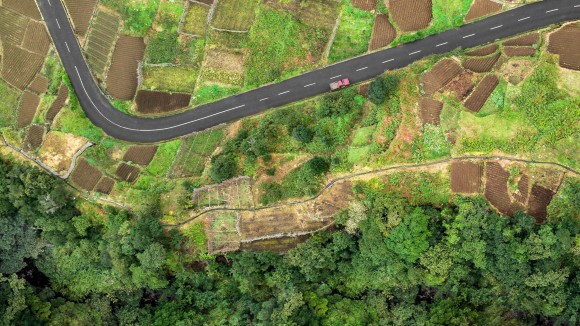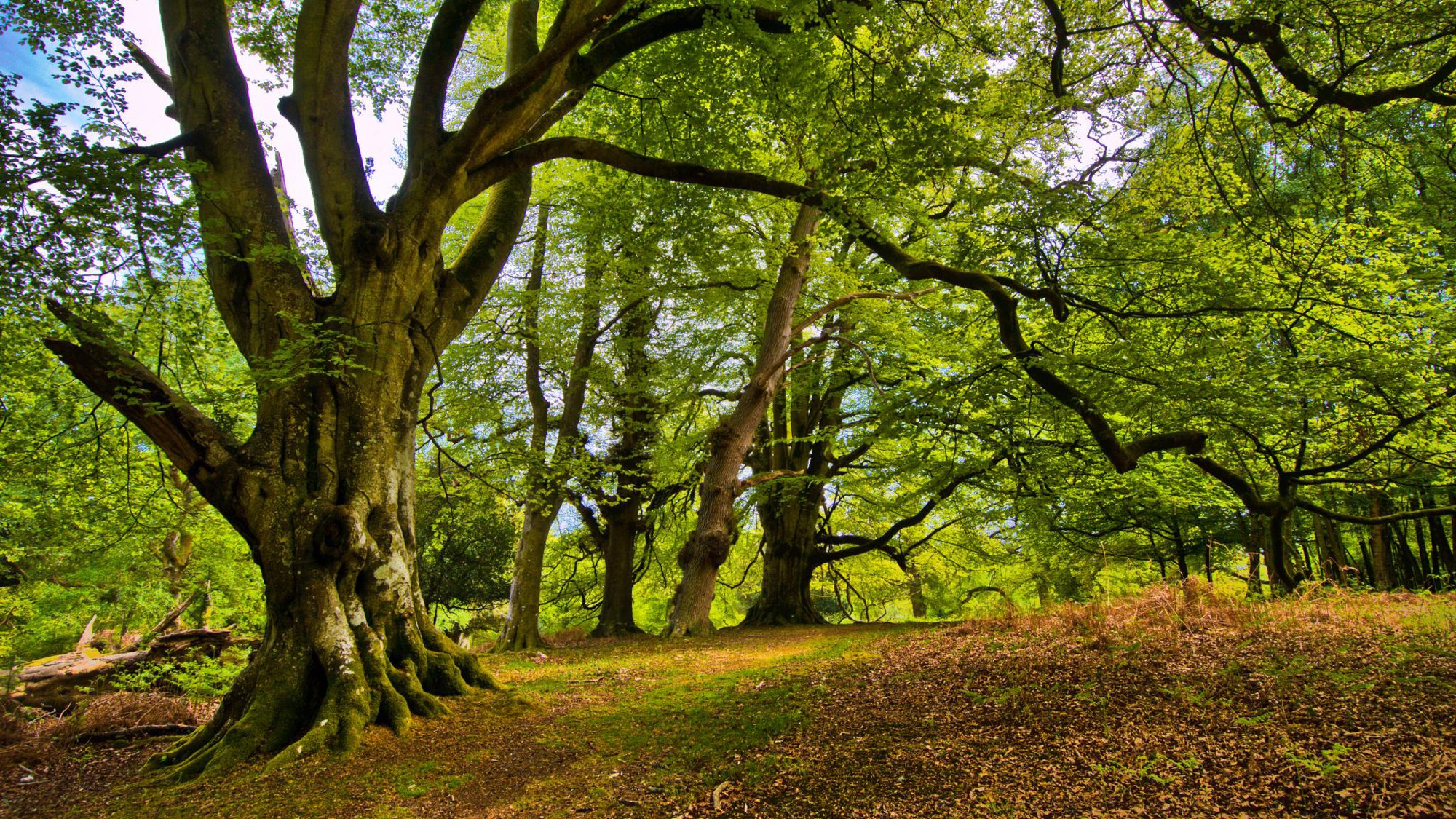Human land use patterns have profoundly shaped the natural world, from deforestation to urbanization to agricultural expansion.
These changes drove the rise of civilization yet incur steep ecological costs.
This article explores how human activities like farming, mining, logging, and development have impacted Earth’s interlinked climate, water, carbon, and nutrient cycles on a global scale.
How Has Human Land Use Impacted the Environment?

Human land use patterns including agriculture, urbanization, and resource extraction have profoundly disrupted Earth’s interconnected climate, water, carbon, and nitrogen cycles.
This has led to widespread habitat destruction, biodiversity declines, soil degradation, and acceleration of climate change through greenhouse gas emissions and loss of carbon sinks.
Key Points
- Deforestation and habitat loss are primary drivers of mass species extinctions.
- Agricultural soils have lost up to 50% of original organic carbon stocks since industrialization.
- Urban expansion exacerbates species declines through pollution, invasive species, and local climate changes.
How Does Deforestation Affect Biodiversity?

Deforestation, or clearing trees faster than they regrow, is a leading driver of biodiversity declines.
Removing critical habitat threatens the vast majority of terrestrial species that dwell in forests. Fragmentation also isolates populations.
Edge effects like increased light exposure and decreased humidity further degrade forest conditions.
Selective logging of economically valuable tree species alters forest structure, composition, and food webs.
Overall, deforestation-driven biodiversity losses undermine ecosystem services like water filtration, soil health, carbon sequestration, pollination, and local climate regulation that forests provide.
What Role Do Forests Play in the Water Cycle?
Forests are integral to the global water cycle through transpiration, rainfall interception, and soil infiltration.
Trees return moisture to the atmosphere through transpiration.
Forest canopies and leaves intercept rainfall, controlling runoff and flooding.
Roots and porous litter facilitate water infiltration and aquifer recharge.
Deforestation that compacts soils and removes vegetation cover causes more surface runoff, less groundwater recharge, increased risk of floods and landslides, and reduced precipitation recycled through plant transpiration.
Overall, intact forests provide high-quality water yields compared to degraded lands.
How Does Agriculture Alter the Carbon Cycle?
Since the Industrial Revolution, converting natural ecosystems to grow crops and pastures released over 160 gigatons of carbon into the atmosphere through soil disturbance and biomass loss.
Agricultural soils then lost up to 50% of their original organic carbon stocks.
However, sustainable practices like cover cropping, organic amendments, conservation tillage, and integrated livestock grazing can rebuild soil carbon.
Perennial polycultures also sequester more carbon below ground than conventional mono-crops.
Optimizing agriculture to enhance carbon storage in vegetation and soils remains crucial to mitigating climate change.
Can Habitat Loss Lead to Species Extinction?
Habitat loss is the number one threat to 85% of all threatened and endangered species globally.
emoving native vegetation decimates dependent wildlife.
Amphibians requiring moist forests and birds relying on specialized flowering plants decline precipitously when these habitats disappear.
Predators higher on the food chain follow prey declines.
Once habitat shrinks below a threshold to sustain breeding populations, extinction vortices occur.
While habitat protections curb extinctions, restoration must expand degraded habitats and reconnect fragmented areas at meaningful scales to bring endangered species back from the brink.
How Does Soil Degradation Threaten Food Security?
Modern conventional agriculture degrades soils through erosion, salinization, and fertility loss, undermining humanity’s food security long-term.
Plowing and leaving soils bare between crops destroys the structure and removes organic matter.
Irrigation without drainage raises salt levels over time.
The Food and Agriculture Organization estimates one-third of global soils are degraded and overgrazed, imperiling food production as populations grow.
Building healthy soils through conservation practices like cover cropping, integrated livestock grazing, and zero tillage sustainably boosts food productivity and climate resilience while securing humanity’s food supply.
Can Urbanization Negatively Impact Biodiversity?
Urban expansion replacing wildlands and farmlands causes substantial biodiversity declines through habitat loss and fragmentation, overexploitation, pollution, invasive species, and climate change.
Native birds, mammals, reptiles, amphibians, insects, and plants disappear as urban boundaries grow.
But sustainable development incorporating green spaces and native biodiversity, low-impact transportation, and local food systems can reduce cities’ ecological footprints.
Urban ecosystems supporting endemic diversity and ecosystem services offer liveability and climate resilience benefits surpassing costly hard infrastructure.
Overall, smart urban planning balancing gray and green infrastructure sustains both human and environmental wellbeing.
What are 5 Ways Humans Impact the Environment?
Humans alter the environment in many ways, including:
Deforestation – Converting forests to farms, ranches, and cities destroys habitat and carbon sinks while increasing erosion and emissions.
Overharvesting Resources – Overfishing, overhunting, excessive logging, and unsustainable mining deplete resources faster than natural replenishment.
Pollution – Industrial chemicals, plastic waste, urban runoff, oil spills, pesticides, and human trash poison ecosystems.
Invasive Species – Transport of alien plants, animals, and pathogens displaces native species lacking evolved defenses.
Climate Change – Burning fossil fuels emits greenhouse gases that destabilize global temperatures, precipitation patterns, and extreme weather.
Additionally, overpopulation strains resources.
Unsustainable agricultural practices degrade land productivity.
Prioritizing short-term profits fails to value nature’s services.
An integrated approach balancing human needs and ecological limits is required.
How Can Human Land Use Cause Changes in Global Systems?
Human land use profoundly disrupts the climate, biogeochemical, and hydrological systems sustaining life on Earth.
Deforestation, urbanization, agriculture, mining, roads, and infrastructure amplify greenhouse gas emissions, alter water cycles, convert habitats, fragment ecosystems spread invasives, deplete biodiversity, degrade soils, and accelerate erosion.
For example, wetland draining reduces carbon sequestration while also impacting flood control and water filtration.
Overuse of chemical fertilizers creates aquatic dead zones.
Clear-cutting rainforests disrupt regional rainfall patterns.
Road construction fragments migration routes.
The compounding effects of human land use transmit far beyond local regions by fundamentally altering global systems in ways threatening humanity’s own well-being.
What Human Activity Causes the Most Harm to the Environment?
The human activity with likely the largest environmental impact is burning fossil fuels for energy production and transportation.
Combustion of coal, oil, and natural gas produces carbon dioxide, methane, and other greenhouse gases driving climate change.
The Intergovernmental Panel on Climate Change names fossil fuel emissions the dominant cause of observed increases in atmospheric carbon dioxide since 1970.
Resulting climatic changes including warming, sea level rise, ice melt, and shifting precipitation patterns impact every ecosystem on Earth.
Phasing out fossil fuels and switching to renewable energy sources like solar, wind, and sustainable biofuels is essential to mitigate the huge environmental harm from greenhouse gas emissions.
How Did Human Factors Affect Land Use?
Complex interactions of human social, political, economic, and cultural forces shaped modern land use patterns.
Population growth increased demands for living space and resources.
Capitalism and colonialism spurred the exploitation of “natural resources” for profit.
Technology enabled intensive production from lands.
Policy frequently incentivized ecologically harmful practices.
Privileging economic value over nature’s intrinsic worth justified environmental destruction.
Sense of disconnection and dominance over nature encouraged unconstrained consumption.
Failures to account for ecological limits and environmental externalities amplified damage.
More balanced, ethical approaches valuing sustainability, indigenous knowledge, and ecosystem services are needed to create less destructive land use systems.
Key Takeaway:
- Human land use profoundly disrupts the planetary systems sustaining all life. But by carefully stewarding forests, soils, habitats, and biodiversity while reducing waste, humanity can inhabit the planet more sustainably, equitably, and prosperously.
FAQ
What Is Urban Sprawl?
Urban sprawl refers to the uncoordinated,auto-centric expansion of urban boundaries into surrounding undeveloped lands in ways that exceed population growth rates.
How Does Agriculture Impact Water Quality?
Fertilizer and sediment runoff degrade aquatic ecosystems. However, sustainable practices like riparian buffers, crop rotation, and conservation tillage can reduce agriculture’s water footprint.
What Is Biodiversity?
Biodiversity refers to the variability of life at ecosystem, species, and genetic levels. It provides stability, resources, and resilience.
GreenChiCafe shares perspectives on humanity’s complex relationship with nature.
Visit our site to learn more about building a sustainable future.
